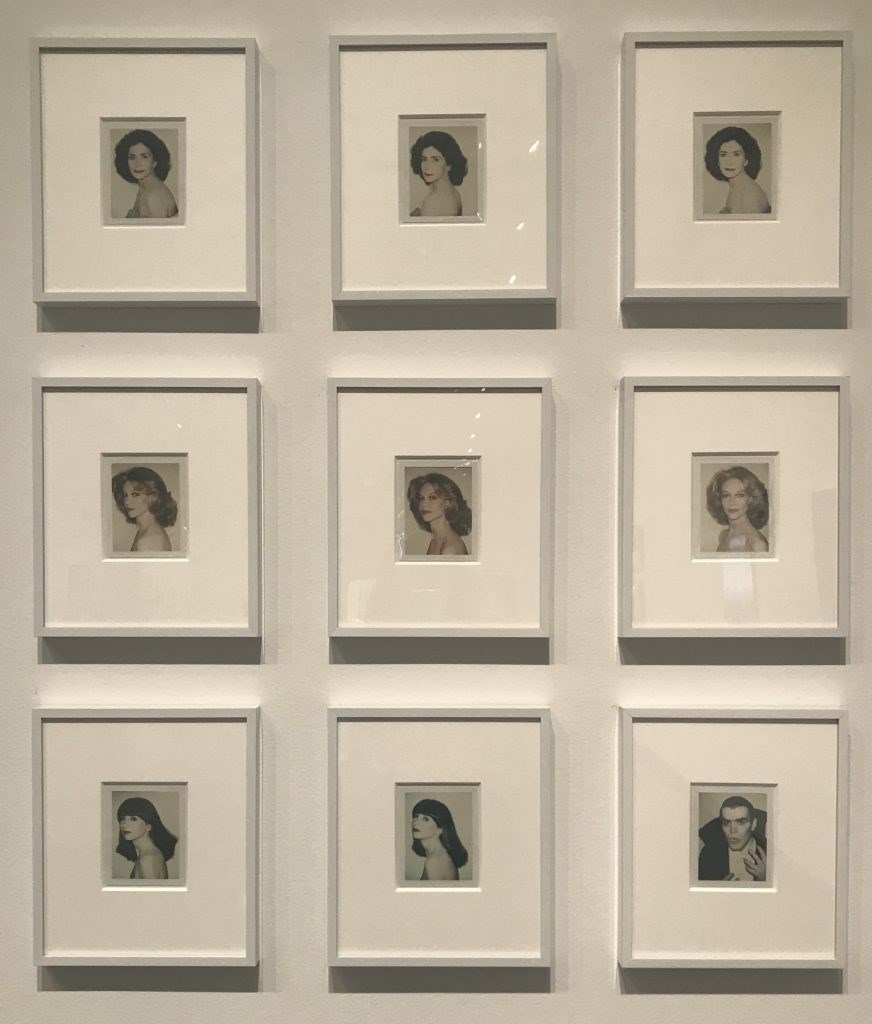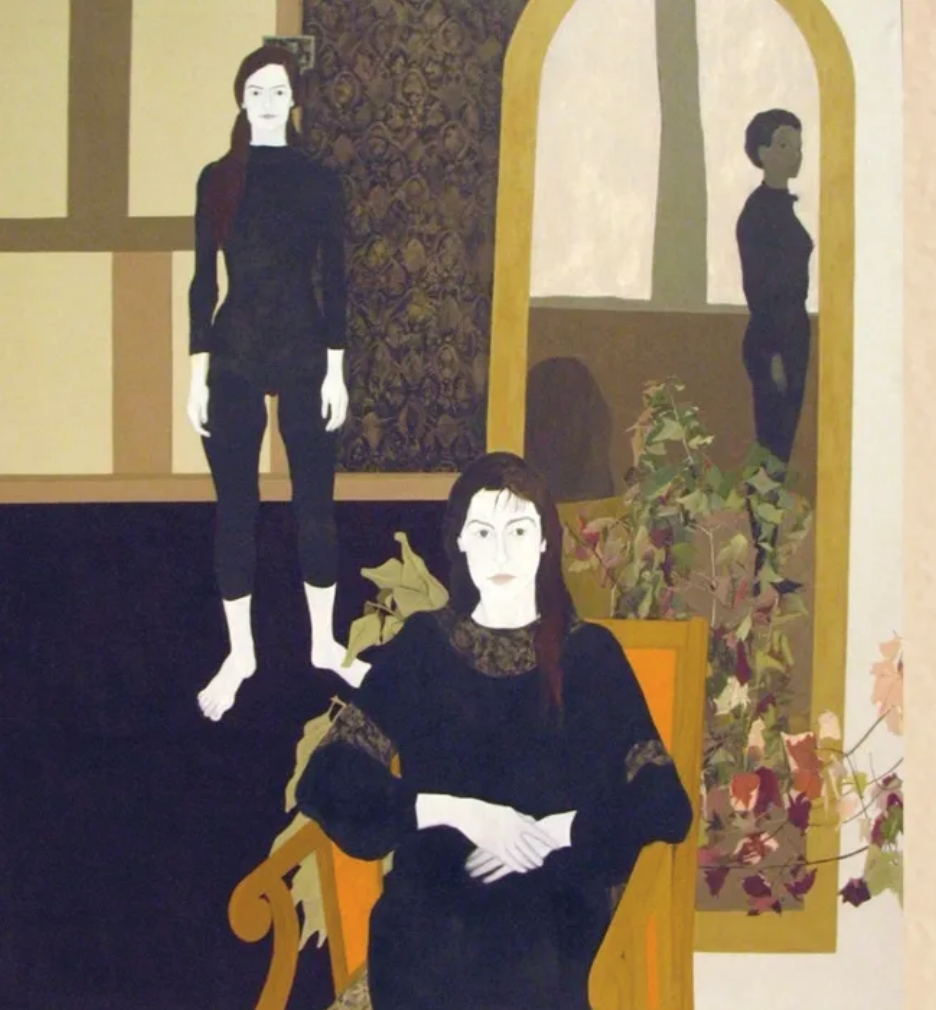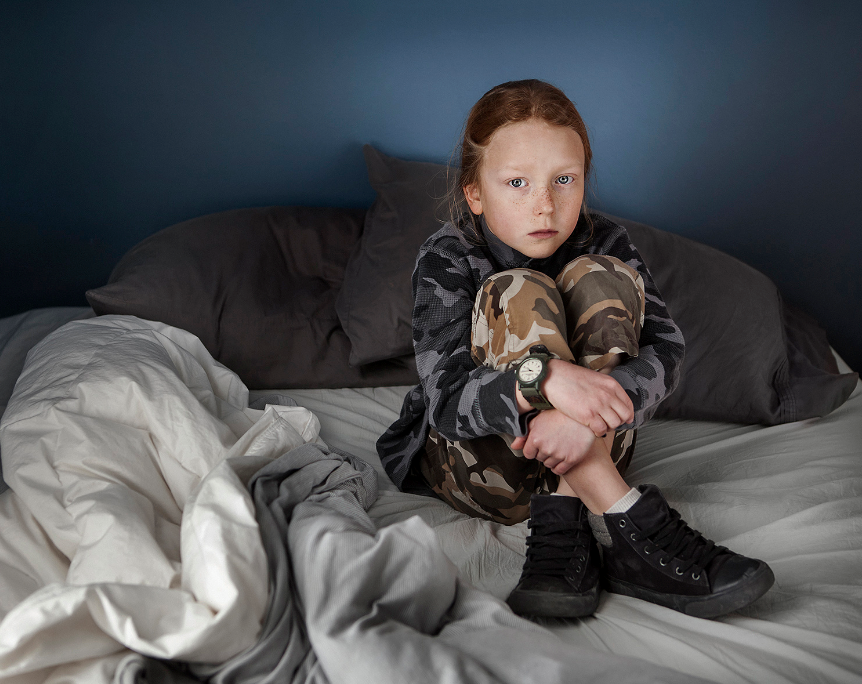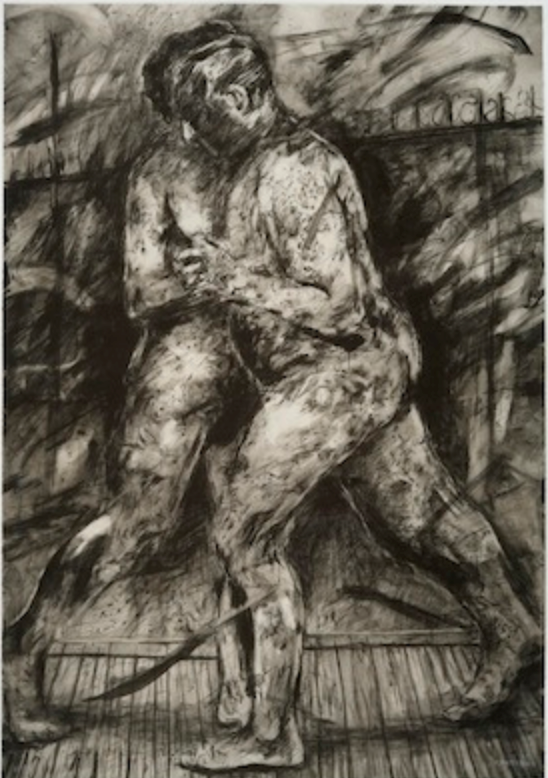This content was originally published by the Longmont Observer and is licensed under a Creative Commons license.
Entering the one-room exhibition Body Language: Picturing People, the eye is immediately greeted by a series of vastly different styles and mediums, in which it becomes clear that the only connection between them is their inherent subject matter, the human. This exhibit goes beyond the simple portrait but aims to capture the full figure and personhood of the body and its identity. Curated by Hope Saska, a specialist in works on paper, this exhibit showcases a vast array of incredible paintings and drawings.
“Body Language: Picturing People”, is one of the new exhibitions at CU Art Museum at the University of Colorado Boulder, which will remain on view through June 2020, showcasing work from the 1830s onward in a refreshing display of contrasting mediums and styles. As stated by the CU Art Museums website “This exhibition considers how the pose, the gesture and body in motion are used by artists to convey meaning. Figural artworks from the CU Art Museum’s collection are brought into conversation across cultural geographies and historical eras”(CUAM). It features art by the likes of William Kentridge, Reginald Marsh, Andrea Wallace, Andy Warhol, and others- all innovative artists in vastly different areas of aesthetic technique that focused on the expressions of the human body, which acts as an equalizer within the art community.
Walking into the exhibit there is a clear flow to the spatial layout of the one-room, starting along the wall it is evident through the strong use of mediums and forms of art that there are many conversations that are taking place and need to be disentangled to fully grasp the importance of this show. I found that walking through these separate conversations that discuss the body and pose allows for the viewers’ exploration into this unique subject matter.
Body language, or nonverbal communication, is how we interact without speaking, this can be done through the shift of a hand or a stronger gesture like touching your cheek. This art of body language allows for the unspoken to be heard, and communicated through the use of expression and movement. The human body as a study of art is complex, even turning the body slightly completely changes the entirety of the piece. This study of form, emotion, and movement has ingrained cultural roots, no matter the perspective or era of art, Like this deeply ingrained history of seeing the body as a work of art, this exhibit reflects the constant fascination of the human figure throughout time. This collection, like most exhibitions that have been displayed here in the past, presents a far more historical work than contemporaneous work. This historical view is what really creates the minor faults within this exhibit, the first of which is its lack of cultural diversity, out of the large room that was dedicated to this exhibit only a few works of art depicted other cultural values and expectations of the Human Body. The second being a lack of modern and culturally relevant views on body diversity and those crucial experiences of the body and identity. This focus on historical rather than contemporary artwork creates interesting conversations about how the body used to be viewed but in turn silences conversations that modern society is currently having regarding the Body as Art. A contemporary Artist that focuses on real people and bodies in her work that would have been able to address this modern conversation about the body in the art world would be Jenny Saville.
Jenny Saville is a well-known oil painter, who creates work similar to this piece from 2018 entitled Red Fates, Saville commonly depicts the human form to raise questions on how the body is represented over time and through different cultures. Saville focuses on modern society’s impression of the body “I want to be a painter of modern life, and modern bodies, those that emulate contemporary life, they’re what I find most interesting.”(Saville) This modern lense of body diversity and these conversations that are current in our understanding of the body in the art would have been a great contribution to this already unique and important exhibit.
That being said, however, the overarching experience of this exhibit is exceptional. Many of these pieces reflect a strong emotional involvement from the artist. Figure drawings or portraits themselves are often related to a strong sense of individualism and they tend to feel very intimate, as the act of creating or viewing a likeness of a person is often deeply personal, this condition reinforces the meaning of “body language.”
In the exhibition, human emotions are present in the personality and execution of the pieces, and the dynamic expressionism of the human form is present in the subjective positioning of these figures, and the impressionistic approach to these works acts to create a conversation on the emotions behind these works of art.
In some pieces, the artist does seem more detached, In a series of Polaroid photographs that Andy Warhol took between 1971 and 1987, Warhols white makeup and shallow depth of field reduces the individuals into a uniformity of their essential characteristics, And though this appears to be minimal to the eyes, this repetitive and same process behind the snapshots transforms the series, called “Lynn Wyatt, Mrs. Estelle Feldman, Barbra Molasky, Dracula,” into a piece that shows impersonality and is also thought-provoking.

In others, the artist is much more attached to the work, like Marcia Marcus who was known as a more conceptual portrait painter, meaning that the concept of the art is more important than the actual finished work. In Marcus’ painting “Three Figures” Marcus paints her own reflection among two acquaintances, giving the viewer a strong sense of familiarity that contrasts well against the spatial tension that is included in the work. In many ways, Marcus’s painting is dull, with large areas of flat color. Her use of space, however, as well as the size, placement, and strange separation of figures act to create a conversation with the viewer, this intense gaze and positioning of the figures offer the subjects a sense of identity and self-agency.

One of the only modern pieces of photography within this exhibit is Andrea Wallaces “Nico” from a series entitled Toward Amnesia, depicted is a child clutching himself, maybe from fear, maybe from cold, but the positioning of the figure creates this sense of worry for the child, this is a perfect example of how body language often calls for the audiences emotions instead of producing its own emotion.

Furthermore, one emotionally evoking painting, in particular, is impossible to miss. William Kentridge’s “Dancing Couple” is composed of exhilarating and looming figures that move in unison. Perhaps one of the largest paintings in the room it is situated in the middle of the right side of the wall. A textured painting that is an entirely monochrome black and white that highlights a strong sense of impressionism. The sharp contrast and simple colors create a sense of ambiguity within the embrace of the two centralized figures. This sense of ambiguity brings the audience into the artwork and creates a story and personality for the characters within the piece itself.

This Exhibition “Body Language: Picturing People,” altogether reflects the values of form and communication in art when focusing on the centrality of the human figure. “Whether in presenting portraits of individuals or fictional personages or in picturing religious icons, artistic depictions of the body speak volumes about personality, character and the values of a time or place.”(CU Art Museum) It presents pieces that, in accordance with each other, illustrate each artist's conception of movement and exposure of individuality through uses of body positions and interchanging mediums. The artistic depictions of the body provide insight into the artist's values and the story. The result is a collection full of pieces that manage to balance the embodiment of individuality and still exemplify the natural association of all human emotions. This exhibition methodically weaves different artists and mediums into a well laid out and relatable exhibit, and overall the variety of work in this exhibit definitely will provide something for everybody.


